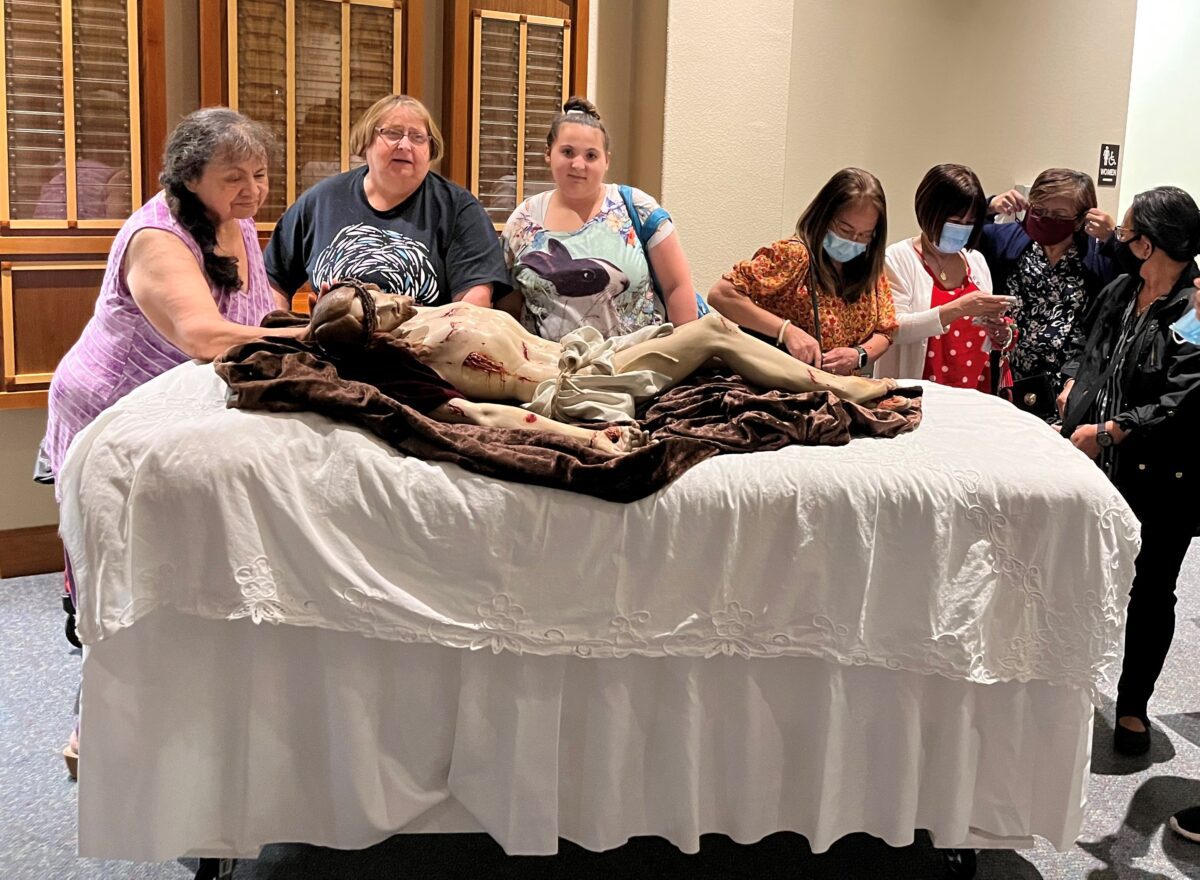WINTER PARK | Sts. Peter and Paul is one of few parishes throughout the United States that celebrates Santo Entierro or Sacred Burial, the commemoration of the moments after Jesus’ death. The Filipino tradition reverences Jesus’ body after His passing and venerates His five wounds through procession of Jesus’ corpus throughout the town.
Brought to the parish in 2012 by the late Deacon Gubatan Nemsy, the commemoration at Sts. Peter and Paul began with about 10 Filipino parishioners in the chapel, often late in the evening on Good Friday. In recent years, it grew to almost 200 parishioners of all nationalities.
“We give so much attention to the persecution of Jesus, His suffering, His condemnation to death, and how He died by Crucifixion, as is reflected in the Stations of the Cross,” Father Juanito Figura noted, the Filipino priest who has done much to shine a light on the devotion at the parish. “The Stations are a devotion to the suffering and death of Jesus. The Santo Entierro is a devotion to the burial of Jesus. Easter Sunday is a big celebration for His resurrection. So, the burial has not been given that attention and that is what this devotion is all about,” he explained.
He noted the doctrinal foundation is in our Creed, when we say “… He suffered, died and was buried, and on the third day He rose from the dead.” Father Figura said, he “hopes the devotion continues when we’re gone.”
In the Philippines, the celebration begins after the Passion of the Lord liturgy. It begins with a procession of carrozas or carts, decorated and carrying statues of saints, the body of Jesus in a glass coffin, concluding with Our Lady of Sorrows, recognizing Mary’s deep pain at the torturous death of her Son. The procession often lasts five hours or more as it weaves through streets covering the entire town. At Sts. Peter and Paul, the devotion is far more modest, but just as meaningful.
“This is not about being extravagant,” noted Dan Lacsamana, the head of the Filipino-American Ministry. “This is your time to thank God for offering Himself to die on the cross. That is our goal.” At Sts. Peter and Paul, there is a simple procession of the corpus into the church, followed by a Liturgy of the Word, the five prayers corresponding to each of Jesus’ five wounds – the left foot, right foot, left hand, right hand and His side, then devotees may approach the statue of His body with a small white cloth and gently wipe each of the wounds.
They conclude with the prayer of the Divine Chaplet kicking off the novena. This year the prayers will be read in five different languages with the English translation projected on screens.
Lacsamana loves this devotion because he recalls growing up with the statue of the Santo Entierro next door (in his town of Tarco). He explained, in the Philippines, the statues are owned by families, and they usually have descendants from those originally involved with each statue. In his case, his neighbors owned the statue for centuries. The statue is inherited by the family member with the greatest number of boys because they carry the statues in the procession. His neighbors had five boys.
During the pandemic, when the parish could not have the devotion, individual families took it home during the novena. Lacsamana recalls unique experiences his family and others shared during that time, often at 3 p.m. when the chaplet was prayed.
Others, like Ida de los Angeles, a member of the Filipino-American Ministry, were unfamiliar with the devotion until they came to Sts. Peter and Paul. Although raised in the Philippines, she did not live in the larger cities where it was celebrated.
“For Filipinos, Holy Week is a truly solemn week,” she said. “We take our devotions seriously, especially during Holy Week. When I was introduced to the Santo Entierro, I knew I wanted to be part of it, and it would become part of my Holy Week ritual.”
She recalled becoming very emotional the first time she gently wiped Jesus’ wounds. “It takes a lot not to cry,” she said, noting the statue is so life-like.
She shares special petitions with Jesus, and, during the prayers, she tries to contemplate His suffering. “Each one of us has a cross in our life, and it just tells you Jesus will be with you, because He literally has His own cross. It somehow completes Good Friday for me. It assures you will have Jesus with you, so you can always have hope, and faith, and trust in Him.”
By Glenda Meekins of the Florida Catholic staff, April 07, 2023

